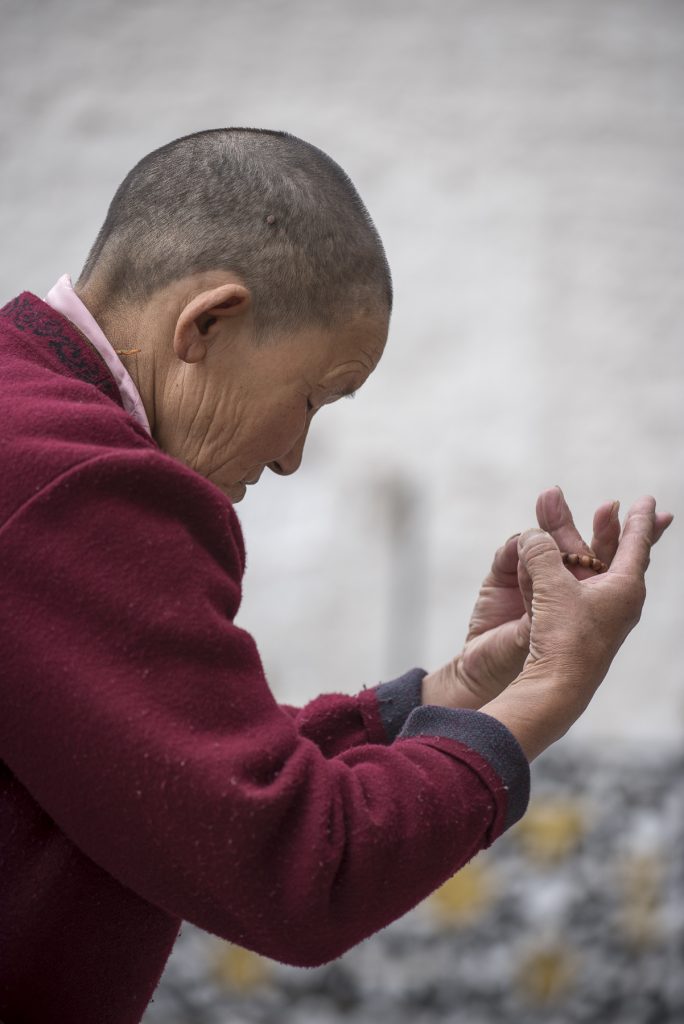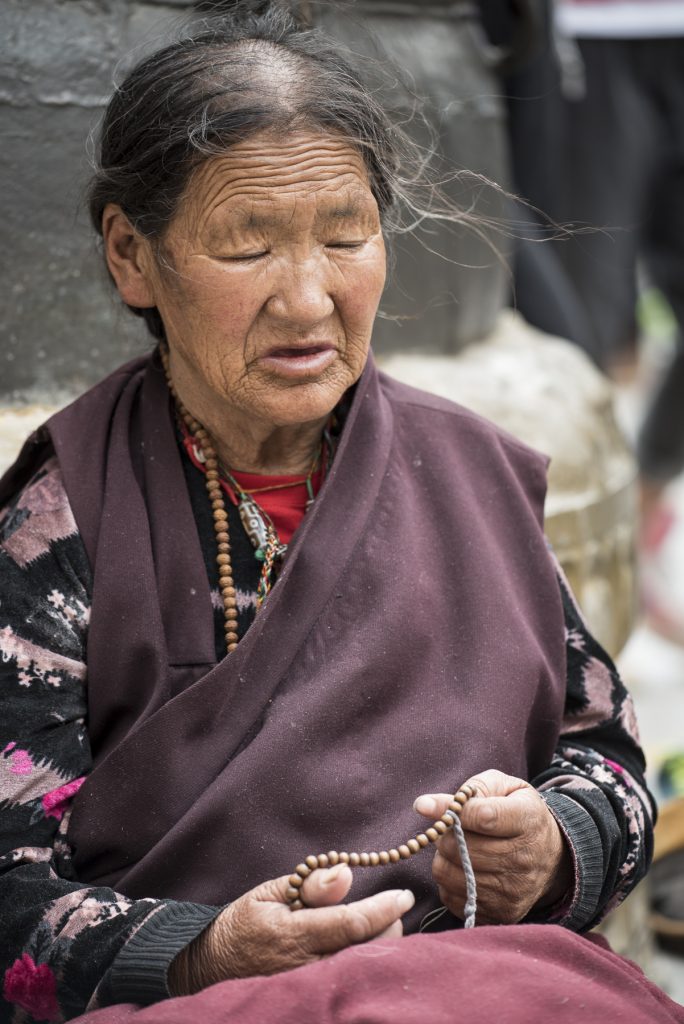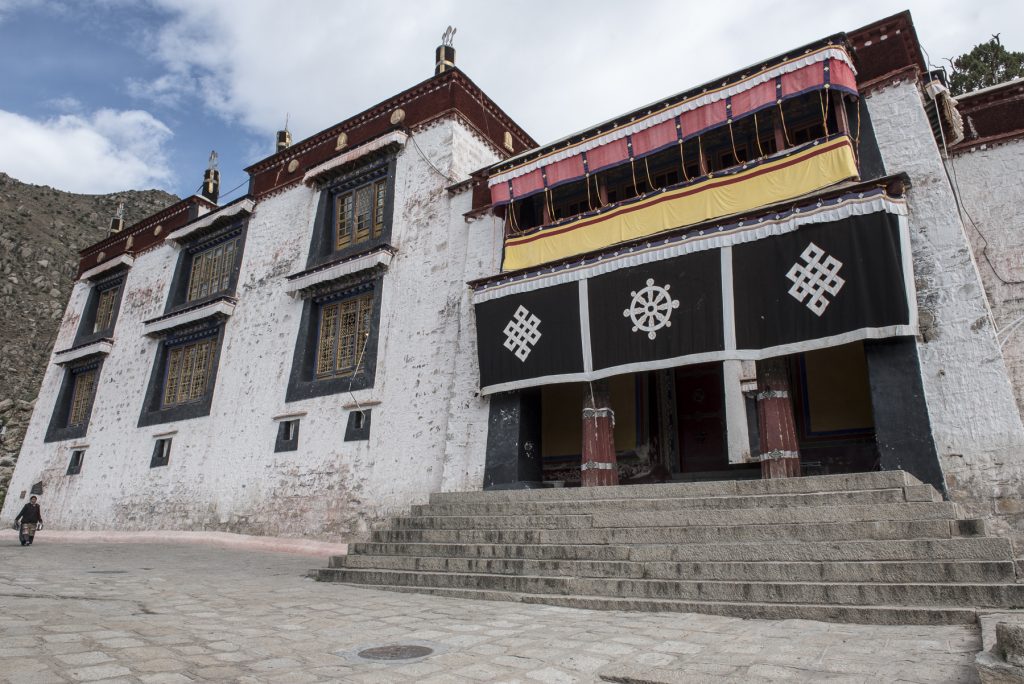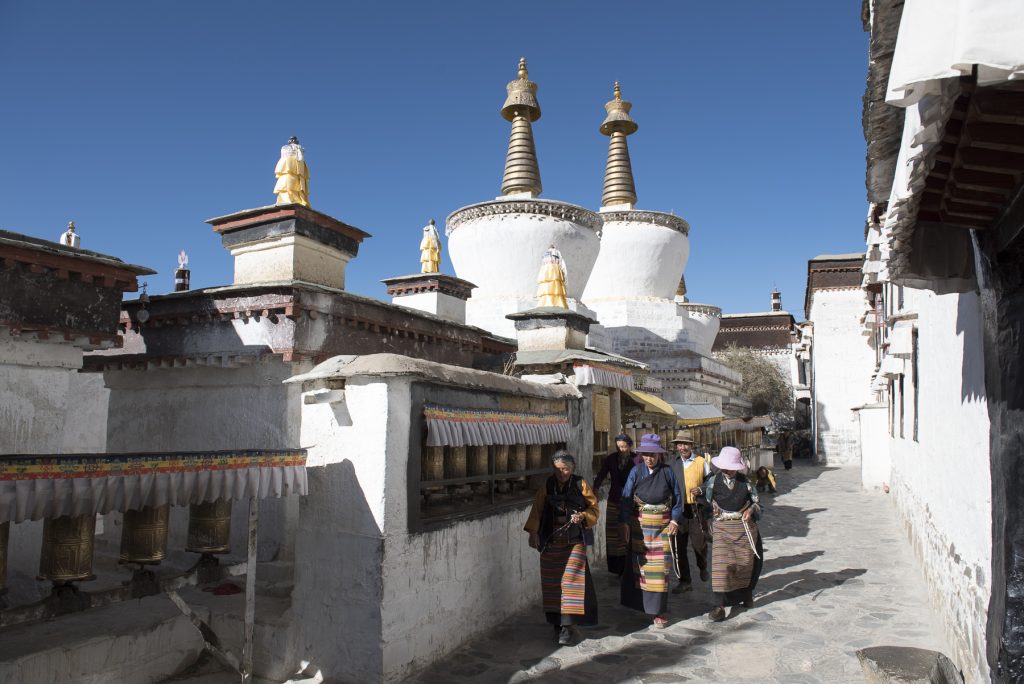The Road to Kailash (part 1)
Once I decided to embark on my photographic project ‘Devotion’, exploring faith traditions around the world, I knew that Mount Kailash would be its center point and anchor.
An ancient place of pilgrimage and holy to four religions, Mount Kailash stands in the remote far west of the Tibetan Autonomous Region, a barren high altitude land, bordered by the Himalayas.

The origin stories of these religions (Bons, Buddhists, Hindus and Jains) consider Kailash to be the center and birthplace of the universe, the Axis Mundi, the abode of Shiva. Although one of the most important places of pilgrimage in the world it is also one of the least visited due to its remote location and the challenges of altitude and weather.
I decided that Kailash would be the first destination of my new photographic project. I did the research, contacted guides, planned a route in through Nepal and so on. But they say Kailash calls you when you are ready. Evidently I wasn’t ready – for the next four years my several attempts to reach the mountain were thwarted. The Chinese reluctance to issue permits, personal injury and the tragic earthquake in Nepal kept forcing me to postpone the journey and visit other lands. In 2017 I finally decided to travel through China – flying to Chengdu and from there on to Lhasa – and permits seemed forthcoming.

To get to the holy mountain from Lhasa I would travel in a four-wheel drive for several days across the great expanse of the Tibetan Autonomous Region to Kailash in the far west. I would visit monasteries and an ancient kingdom along the way, rest in basic guesthouses and gradually get accustomed to the altitude which averaged 4500m before embarking on the Kailash Kora – following the pilgrims in circumambulating the mountain, reaching a height of 5630m.
On arrival in Tibet I spent a couple of nights in Lhasa to acclimatise to the altitude and see the historical sites. The city of Lhasa – whose name translates as The Land of the Gods – has been the center of Tibetan Buddhism for over 1300 years. However, now with Chinese government sponsored immigration it has become a Chinese city with a Tibetan quarter.
Potala Palace still stands fortress like and formidable above the city, although now with a Chinese flag flying from its roof. A fort was first built on the Marpo Ri hill in the 7th Century AD and the building of the present palace was begun in 1645. With over 1000 rooms it was home to centuries of Dalai Lamas and now houses their golden tombs along with ancient manuscripts and rare cultural relics.
The Jokhang Temple resides in the Barkor district of Lhasa. Considered the most sacred temple in Tibet, pilgrims make their way to it from all over country, many prostrating themselves around the kora that circles it. Over 1300 years old it houses the most sacred image of the Buddha, the golden Jowa Sakyamuni, which gives the temple its name. During the Cultural Revolution the Red Guards sacked the temple and it was closed for a decade before being renovated.
Not far outside Lhasa lies Sera Gompa. Named after the wild roses that populated the site where it was built in 1419, it is one of the three great Gelug university monasteries of Tibet. During the 1959 uprising much of the monastery was destroyed and hundreds of monks killed. Once a hermitage of 7000 it now houses 550 government approved monks.
A fundamental aspect of learning Buddhist doctrines is debate which has been integral to Sera since its foundation. In a debating courtyard, watched over by their teachers, monks follow strict procedures. One acts as a defender of a proposition and the other a questioner. There is a whole language of dramatic gestures, some used to mislead and some as a sign that a monk has finished his argument and is awaiting a reply.
Drepung, the largest Tibetan monastery, lies around 5km from Lhasa. It is another of the Gelug University Monasteries. It is said to have once been the largest monastery in the world, housing 10,000 monks. Sadly almost half the complex was destroyed during the Chinese invasion in 1951. Following a re-education campaign by the Chinese in the late 1990s monks were forced to renounce the Dalai Lama. Like Sera, the Chinese government now heavily monitors the monastery and it caps the number of monks at 300.
It was time to hit the road to Kailash. What used to be a hazardous journey across the Tibetan Plateau, often abandoned due to broken bridges, flooding rivers and landslides, is now pretty painless – though long. The route is for the most part a tarmacked road – with Chinese control posts dotted along the way.
We drove several hours via Yamdrok Lake to our first stop Gyantse. Wandering around the streets that evening I heard the blowing of monks’ traditional horns – dungchen. I searched the narrow alleyways for the source of the sound and stumbled across a small monastery.
The next morning I visited the Pelkor Chode Monastery that holds Gyantse’s famous Kumbum – the largest chorten in Tibet. Founded in 1427 it houses 76 chapels and around 10,000 wonderful murals that have somehow survived the ages. Each of the nine tiers of the Kumbum represents three-dimensional mandalas that form a progressive spiritual path as one ascends. The main temple is known as Tsulaklakang has a magnificent assembly hall and five impressive chapels.
The monastery has suffered through the years. In 1904 it was damaged by a British attack, then in 1959 partially destroyed by the Chinese after an uprising and then again during the Cultural Revolution. Before 1959 there were 1520 monks, now there are less than 80. However, Pelkor Chode still attracts endless pilgrims, many of whom prostrate their way around the linkgkhor, circumambulating the complex.
Overlooking Gyantse is the old Dzong or fort that dates back to 1268.
The next monastery of note along the road to Kailash is Tashilumpo in Shigatse. The monastery was founded by the 1st Dalai Lama in 1447 and has been traditionally the seat of the successive Panchen Lamas – a now controversial subject as the most recent was appointed by the Chinese and is kept in Beijing for reasons of ‘education’. Covering 70,000 square meters it is the largest monastery in Tibet and once housed 5000 monks (now probably 70). Its giant statue of the Maitreya Buddha is the largest gilded statue in the world.
Another day and another long drive across the plateau brought us to Sakya Gompa and nunnery, both very different is architecture to the others I had seen – painted grey and Mongolian in style.
That evening I hiked up to the nunnery, the altitude testing me, but worth it for the views over the town – now heavily built up.
Early the following morning I visited the monastery in time to catch the monks at morning meditation. Originally founded in 1073, its grounds cover more than 18,000 square meters and the great hall around 6000 square meters. After the 1959 uprising many buildings were destroyed and hundreds of monks fled. The numbers dropped from over 500 to just 36 elderly monks at the time. The great library of Sakya, hidden behind a sealed wall during the Cultural Revolution, survived and is famed throughout the world for its Tibetan scrolls and works of literature.
Later that day began the long drive to Saga, our halfway point on the road to Kailash. The landscape was barren and beautiful. Clouds cast their shadows across the hills and mountains and the colours shone vivid in the clean air and high altitude.

The journey continues…





























